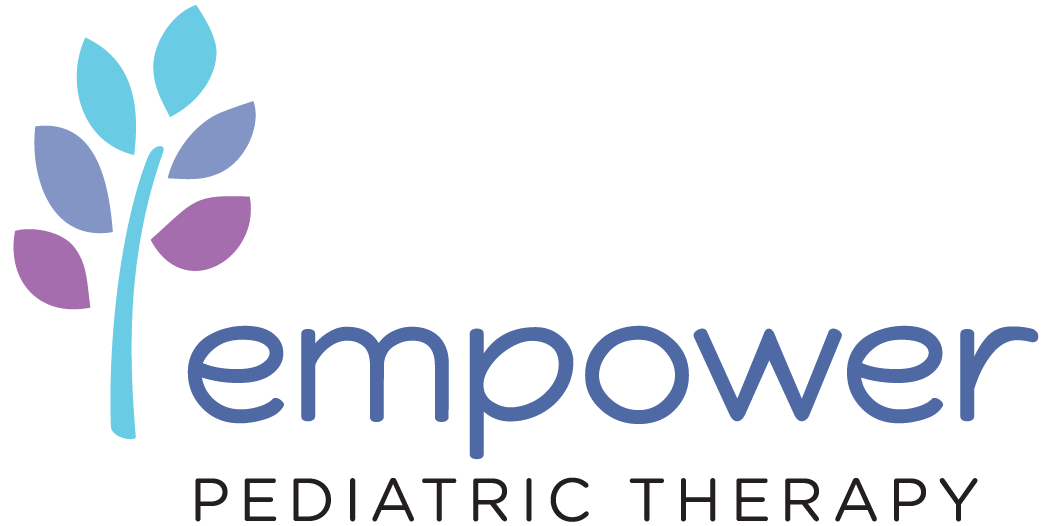
This checklist is based upon How Does Your Child Hear and Talk? (courtesy of the American Speech–Language–Hearing Association.)
Still not sure?
Call our office and one of our patient care coordinators will be able to answer any additional questions you may have about Springboard Pediatric. If you’re not sure if your child needs therapy services, let our therapists take a peak! We offer free 10-15 minute consultation (virtual or in-person) with one of our amazing therapists. At the end of the consultation, you will know whether an evaluation is right for your child.
SPEECH THERAPY
Not sure if your child would benefit from speech and language therapy? Use this checklist to help.
Communication developmental milestones:
Birth to 3 months:
- Reacts to loud sounds
- Calms down or smiles when spoken to
- Recognizes your voice and calms down if crying
- When feeding, starts or stops sucking in response to sound
- Coos and makes pleasure sounds
- Has a special way of crying for different needs
- Smiles when he or she sees you
4 to 6 Months
- Follows sounds with his or her eyes
- Responds to changes in the tone of your voice
- Notices toys that make sound
- Pays attention to music
- Babbles in a speech-like way and uses many different sounds including sounds that begin with p, b, and m
- Laughs
- Babbles when excited or happy
- Makes gurgling sounds when alone or playing with you
7 Months to 1 Year
- Enjoys playing peek-a-boo and pat-a-cake
- Turns and looks in the direction of sounds
- Listens when spoken to
- Understands words for common items such as “cup,” “shoe,” or “juice”
- Responds to requests (for example, “Come her”)
- Babbles using long and short groups of sounds (for example, tata, upup, bibibi)
- Babbles to get and keep attention
- Communicates using gestures such as waving or holding up arms
- Imitates different speech sounds
- Has one or two words (for example, “hi,” “dog,” “dada,” “mama,”) by first birthday
1 or 2 years
- Knows a few parts of the body and can point to them when asked
- Follows simple commands (for example, “roll the ball”) and understands simple questions (for example, “Where’s your shoe?”)
- Enjoys simple stories, songs, and rhymes
- Points to pictures, when named, in books
- Acquires new words on a regular basis
- Uses some one- or two-word questions (for example, “Where kitty?” or “Go bye-bye?”_
- Puts two words together (for example, “more cookie”)
- Uses many different consonant sounds at the beginning of words
2 to 3 Years
- Has a word for almost everything
- Talks about things that are not in the room
- Uses two- to three-word phrases to talk about and ask for things
- Uses k, g, f, t, d, and n sounds
- Understands opposites like go-stop, big-little, up-down
- Asks “why?”
- Speaks in a way that is understood by family members and friends
- Names objects to ask for them and to direct attention to them
3 to 4 Years
- Hears you when you call from another room
- Answers simple “Who?” “What?” “Where?” and “Why?” questions
- Talks about activities at daycare, preschool, or friends’ homes
- Uses sentences with four or more words
- Speaks easily without having to repeat syllables or words
4 to 5 Years
- Pays attention to a short story and answers simple questions about it
- Hears and understands most of what is said at home and in school
- Understands words for order, like first, next, and last.
- Understands words for time, like yesterday, today, and tomorrow.
- Uses sentences that give many details
- Tells stories that stay on topic
- Communicates easily with other children and adults
- Keeps conversation going
- Says most sounds correctly except for a few (l, r, s, v, z, ch, sh, th)
- Uses rhyming words
- Names some letters and numbers
- Talks in different ways, depending on the listener and place. Your child may use short sentences with younger children. He may talk louder outside than inside.

